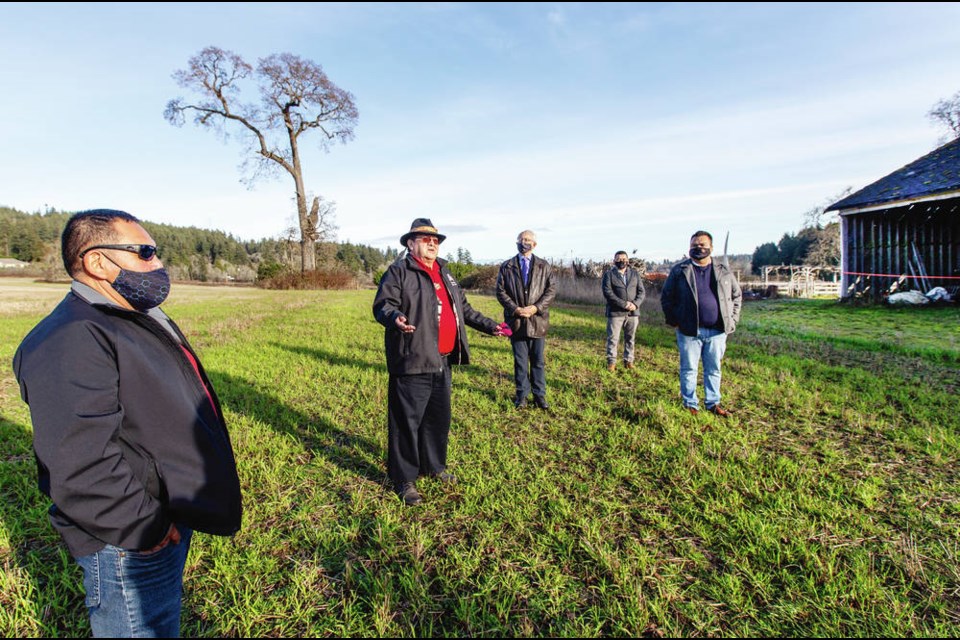The former Woodwynn Farms is now in the hands of the Tsartlip First Nation, after the province transferred the West Saanich Road property with its distinctive big white barn and outbuildings this week.
The 78-hectare property, historically used by the Tsartlip Nation for hunting, farming and traditional practices, is next to the 1,000-member nation’s only reserve.
The growing nation, which is running out of space for housing, recreational and cultural activities, says the land is welcome.
“Our nation is excited to acquire this property to expand our land base for our membership,” Chief Don Tom said in a statement Thursday. “Acquiring this property almost doubles the amount of land we currently have, so we can begin to plan for current and future generations to support our growing population. We recognize the importance of stewardship to ensure the environment of this land is sustainable.”
Tsartlip First Nation bought the property, which is in the Agricultural Land Reserve, from B.C. Housing with a $7.77-million grant from the province.
A local farmer has been leasing the land to grow hay, grain, vegetables and fruit after it was purchased by B.C. Housing in mid-2018. That lease has been extended to September 2021.
Murray Rankin, minister of Indigenous Relations and Reconciliation, called the return of the Woodwynn Farms land “a tremendous step forward” in reconciliation between the provincial government and Tsartlip First Nation.
The province acquired the farm after a non-profit society running it as a therapeutic residential treatment centre to help those dealing with addiction, mental-health issues and homelessness faced foreclosure from mortgage holders who were owed more than $5 million.
The society had bought the farm even though multiple housing units on the property were not allowed by the Agricultural Land Commission or the municipality of Central Saanich.
The on-site treatment centre never came to fruition. By 2018, a handful of people were living in trailers, but those were deemed to be unsafe and occupants were ordered to move out after a fire broke out.
No housing meant little revenue for the farm, which ran a market.
The province said it spent $5.8 million to buy the farm and invested another $1.1 million to cover renovations, fees and consulting costs.
At the time of the purchase, B.C. Housing said it bought the land to use as a therapeutic recovery facility for people dealing with substance abuse and mental-health challenges, with those receiving treatment at the farm living off-site in supportive housing. A permanent treatment program was never established, however.
Tsartlip councillor Joe Seward said the farm land, or Máwueć, used to be hunting territory and a cedar tree forest, where elders would harvest medicines. “Our people were kicked off that land and settlers cut down the cedar trees. Cedar is sacred to our people.”
Seward recalls hearing his grandfather’s memories of the area. “As a child, his family used to visit relatives in Tsawout (East Saanich) before the roads were built. They had to bushwhack trails and sometimes camp overnight, as it took a long time to arrive near where Centennial Park is today.
“Some of our elders still talk about fishing in Hagen Creek. Salmon used to spawn in the creek before it was polluted by fertilizers.”
Tsartlip councillor and elder Paul Sam (Telaxten) said his grandfather grew fruit and vegetables on the land. “It is very meaningful to our people to have this land returned to our nation, physically and spiritually, land that was taken away. We want to reawaken the land, heal the land and bring the sacredness back.”



